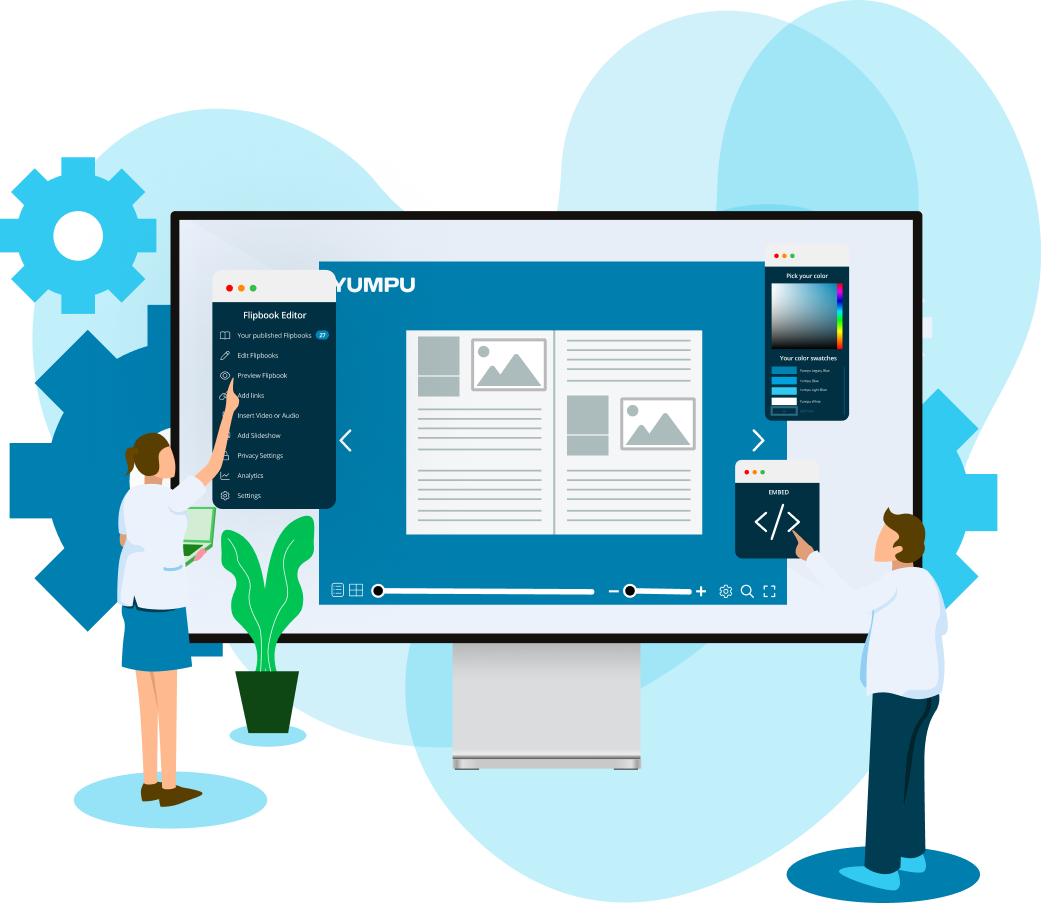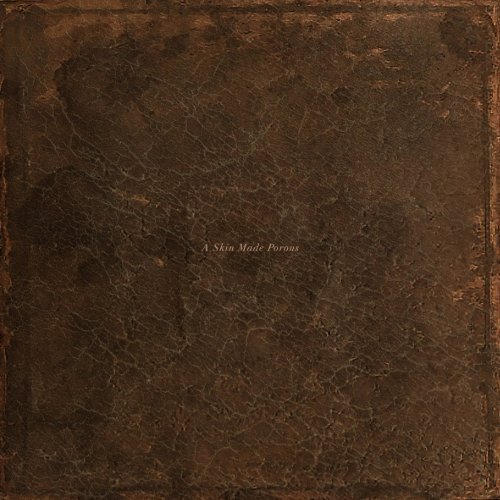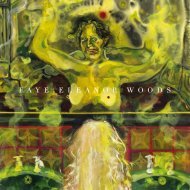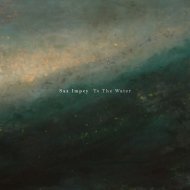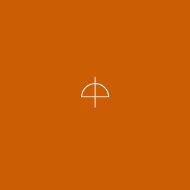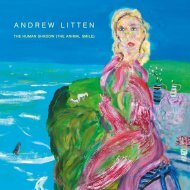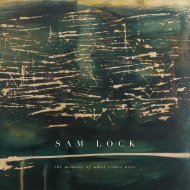A Skin Made Porous
Catalogue of the mixed multi-media exhibition 'A Skin Made Porous' curated by Joseph Clarke at Anima Mundi, St Ives
Catalogue of the mixed multi-media exhibition 'A Skin Made Porous' curated by Joseph Clarke at Anima Mundi, St Ives
You also want an ePaper? Increase the reach of your titles
YUMPU automatically turns print PDFs into web optimized ePapers that Google loves.
“Out beyond ideas of wrongdoing and rightdoing,<br />
there is a field. I’ll meet you there.When the<br />
soul lies down in that grass, the world is too<br />
full to talk about. Ideas, language, even the<br />
phrase each other doesn’t make any sense.”<br />
Jalāl al-Dīn Rūmī<br />
1
This introduction is bookended by two quotes, which<br />
whilst seemingly oppositional, indicate something<br />
intrinsic about the contradictory nature of our<br />
experience. A condition which feels ever pertinent<br />
when viewing our individual and collective exterior<br />
and interior placement in the world. This existential<br />
dichotomy provides a poetic seed from which this<br />
exhibition has grown, and in turn become something<br />
other. I hope that it provides viewers with a space<br />
and opportunity to contemplate and recognise the<br />
guarded self as a solitary entity, armoured. Yet our shells<br />
are there to be breached, by an evolving process<br />
of physical and metaphysical transformation.<br />
The disperate emotional effects of the universe we<br />
inhabit, allow us the potential to retreat or to<br />
transcend towards a greater sense of separation or a<br />
wider unity, where we and all become one.<br />
2
“It is often tragic to see how blatantly a man<br />
bungles his own life and the lives of others yet<br />
remains totally incapable of seeing how much the<br />
whole tragedy originates in himself, and how he<br />
continually feeds it and keeps it going. Not<br />
consciously, of course—for consciously he is<br />
engaged in bewailing and cursing a faithless<br />
world that recedes further and further into<br />
the distance. Rather, it is an unconscious<br />
factor which spins the illusions that veil his<br />
world. And what is being spun is a cocoon,<br />
which in the end will completely envelop him.”<br />
Carl Jung, ‘Aion’<br />
3
Paul Benney (b. 1959)<br />
Paul Benney was born in London and<br />
currently lives and works in Suffolk. He<br />
rose to international prominence as a<br />
member of the Soho and East Village<br />
Neo-Expressionist group, whilst living<br />
and working in New York City in the<br />
1980s where he worked and exhibited<br />
alongside peers Marylyn Minter, Jean-<br />
Michel Basquiat and David Wojnarovicz<br />
among the many other others who made<br />
up the exploding NY art scene. Despite<br />
living and working in this extraordinary<br />
creative environment Benney’s painting<br />
maintained a uniquely English sensibility.<br />
Collections including the Metropolitan<br />
Museum of Art in New York, The Brooklyn<br />
Museum, The National Gallery of Australia<br />
and The National Portrait Gallery in London,<br />
The Royal Collection and The Eli Broad<br />
Foundation own works. He has exhibited<br />
in eight BP Portrait Award Exhibitions<br />
and twice won the BP Visitors’ Choice<br />
Award. Benney’s portrait subjects have<br />
included HM Queen Elizabeth II, Sir Mick<br />
Jagger, John Paul Getty III, 7th Marquess<br />
of Bath, The State Portrait for Israel, Lord<br />
Rothschild, as well as Ben Barnes for the<br />
portrait in the feature film ‘A Portrait of<br />
Dorian Grey’. Benney was invited to be<br />
resident artist at Somerset House in 2010.<br />
During his five year residency he held the<br />
exhibition ‘Night Paintings’ in 2012 and<br />
drew over 15,000 visitors. In 2017 his epic<br />
painting and holosonic sound installation<br />
‘Speaking in Tongues’ was a prominent<br />
feature of the Venice Biennale.<br />
Horror Vacui<br />
digitally animated original painting on media player and monitor<br />
4
5
6
Phoebe Cummings (b. 1981)<br />
Phoebe Cummings works predominantly<br />
using unfired clay to make poetic and<br />
performative sculptures and installations<br />
that emphasise materiality, fragility, time,<br />
creation, loss and decay. Her impressive<br />
interventions are often constructed directly<br />
on site, allowing an instinctive development<br />
of tensions between object and location.<br />
Cummings questions what we will carry<br />
forward into the future by producing<br />
intricate, hand made and exquisitely<br />
delicate sculptures based on ancient plants<br />
and primitive ritual, imbued with a sense<br />
of magic and mysticism. Drawing together<br />
elements of English Paganism as well as<br />
the aesthetic excess of Baroque and Rococo<br />
design, the resultant objects could be<br />
considered as dystopian ornaments of a<br />
future anthropology or fragile relics of an<br />
almost forgotten past.<br />
Cummings is a British artist born in<br />
Walsall, England and currently resides<br />
in Stafford. Cummings studied ceramics<br />
at Brighton University in 2002 before<br />
completing an MA in ceramics and glass<br />
at the Royal College of Art in 2005.<br />
She has undertaken a number of<br />
international artist residencies including a<br />
six month residency at the Victoria & Albert<br />
Museum in 2010. In 2017 she won first place<br />
at the inaugural Woman’s Hour Craft Prize<br />
with work exhibited at the V&A Museum,<br />
before touring to venues around the UK.<br />
Cummings was selected as the winner of<br />
the British Ceramics Biennial Award in<br />
2011 and awarded a ceramics fellowship at<br />
London’s Camden Arts Centre (2012–13).<br />
‘Supernatural’ was her first solo exhibition<br />
at Anima-Mundi. In addition, Cummings’<br />
work has been featured in numerous group<br />
exhibitions, including ‘60|40 Starting<br />
Point Series’ at Siobhan Davies Studios,<br />
London, ‘Formed Thoughts’ at Jerwood<br />
Space, London; and ‘Swept Away: Dust,<br />
Ashes, and Dirt in Contemporary Art and<br />
Design’ at the Museum of Arts and Design,<br />
New York. In 2013, she had a solo show<br />
at the University of Hawaii Art Gallery in<br />
Honolulu and The Newlyn Art Gallery.<br />
Paleozoic Bouquet<br />
unfired clay, glass, wood, wire, 60 x 25 x 25 cm<br />
7
David Kim Whittaker (b. 1964)<br />
Most of David Kim Whittaker’s paintings are<br />
based upon a metaphysical interpretation<br />
of the human head. These portrait portals,<br />
are often ambiguous, with the aim of<br />
representing the totality of the human<br />
condition - both the universal and the<br />
empathetic alongside personal experience.<br />
The works often juggle dual states of inner<br />
and outer calm and conflict, offering a glimpse<br />
of simultaneous strength and fragility,<br />
conscious and subconscious, masculine and<br />
feminine. The paintings express Whittaker’s<br />
constant focus on an attempt to express<br />
something far greater than oneself. Recent<br />
works depict the artists deep sensitivity<br />
and increasing unease when confronted<br />
with the compounding global tensions of<br />
this particlar moment. A dual reflection of<br />
hope and warning stares back at us from<br />
the frame.<br />
Whittaker is a British artist born in<br />
Cornwall where they still reside.<br />
Exhibitions have been held internationally,<br />
notably including a major solo exhibition<br />
at the prestigious Fondazione Mudima in<br />
Milan in 2017. Works are in numerous<br />
museum collections, art foundations and<br />
international private collections. Whittaker<br />
was further acknowledged in 2011 as the<br />
recipient of the Towry Award (First Prize) at<br />
the National Open Art Competition.<br />
New Sunflowers<br />
oil and acrylic on canvas, 180 x 140 cm<br />
8
9
10
Luke Frost (b. 1976)<br />
Luke Frost is a British abstract painter<br />
living and working in West Cornwall.<br />
Despite his notable heritage, as Son of<br />
the English painter Anthony Frost and<br />
the Grandson of the celebrated Modernist<br />
painter Sir Terry Frost, his paintings could<br />
be seen to instead echo a formality found in<br />
1960s American hard-edge, post-painterly,<br />
abstraction. However Frost has developed<br />
his own means of exploring complex<br />
colour relationships, be they harmonious<br />
or provocative, and their impact on their<br />
surroundings alongside an internal and<br />
more contemplative space.<br />
Frost began exhibiting in 2003 following<br />
studies at Falmouth and Bath Schools<br />
of Art. His work was featured in ‘Art<br />
Now Cornwall’ at Tate St Ives in 2007<br />
and in 2008 he was awarded a Tate St<br />
Ives artist in residency during which<br />
time he worked at Porthmeor Studio No.<br />
5, formerly occupied by Ben Nicholson<br />
and Patrick Heron. His solo exhibition<br />
‘Paintings in Five Dimensions’ was shown<br />
at Tate St Ives in 2009. He has since<br />
exhibited in Cornwall, London and USA,<br />
with essays written on his work by Matthew<br />
Collings, Tony Godfrey and Michael Klein.<br />
Neutral Grey & Blue Volts<br />
acrylic on cavnvas, 102 x 102 cm<br />
11
Pale Brilliant Blue Volts<br />
acrylic on aluminium, 84 x 84 cm<br />
12
13
14
Youki Hirakawa (b. 1983)<br />
‘Untitled (Tear)’ is a video by Youki Hirakawa<br />
documenting a fallen tear drop. As time passes<br />
it shows the different phases of the shape of<br />
the tear as it dries. Through his still and<br />
installation-based video artwork, Hirakawa<br />
explores a mysterious and immeasurable<br />
sense of time, loss and longing. His imagery<br />
is imbued with a melancholic quality,<br />
reconnecting a fragile past with a vivid<br />
present casting questions over the future.<br />
He creates a form of video-poetry which<br />
summons the voice of the lost. Hirakawa<br />
constructs his artworks as if to reveal hidden<br />
memories or narratives contained within<br />
the subject, resuscitating sensibilities that<br />
may have since been obscured, primarily<br />
through progressive human activity.<br />
Hirakawa is a Japanese contemporary<br />
artist born in Nagoya, Japan in 1983. He<br />
currently lives and works in Toyota, Japan,<br />
following a long residency in Berlin,<br />
Germany. He was invited to show at the<br />
‘48th International Film Festival Rotterdam’<br />
and ‘65th International Short Film Festival<br />
Oberhausen’ in 2019 and has held solo<br />
exhibitions internationally, including Ando<br />
Gallery, Tokyo, Double Square Gallery,<br />
Taipei, Kunstlerhaus Bethanien, Berlin,<br />
Kunstkraftwerk, Leipzig, Minokamo City<br />
Museum, Japan. Hirakawa has also been<br />
invited to exhibit in international art<br />
festivals including Digital Art Festival<br />
Taipei 2017, International Contemporary<br />
Art Festival Kaunas in 2016, Sapporo<br />
International Art Festival 2014 and Aichi<br />
Triennale 2013. His inaugural solo exhibition<br />
‘Secret Fire’ at Anima Mundi was held<br />
in 2016 and his follow up ‘A River Under<br />
Water’ in 2018. In 2017 he was finalist of<br />
Sovereign Asian Art Prize. Works are held<br />
in numerous public and private collections.<br />
Untitled (Tear)<br />
single channel video<br />
15
Agnes Treherne (b. 1987)<br />
Agnes Treherne lives and works in Sussex.<br />
Her work is concerned with how our<br />
thoughts and articulations are informed<br />
by the environments in which we live. She<br />
works from the premise that the act of<br />
drawing, and the attention it gives to what<br />
is being drawn, is fruitful both to the artist<br />
and the subject, so that the existence of<br />
both is enriched by the other. When there<br />
is a figurative element in her paintings<br />
and drawings, it is often to convey both<br />
connection and dislocation. Her paintings<br />
are based on observations of daily life and<br />
the landscape which surrounds her, like<br />
stills from a film, where time has stopped<br />
and imprinted the situation in a refined<br />
and eternal light. The characters, when<br />
they appear, often seem simultaneously<br />
overwhelmed yet integrated offering a<br />
profound sense of awe, humility, yet also<br />
hope and reassurance within the prosaic<br />
yet sublime settings.<br />
/<br />
Bucks Stream<br />
oil on birch panel, 53 x 61 cm<br />
16
17
Cinderhill<br />
oil on birch panel, 53 x 61 cm<br />
18
Cinderhill<br />
oil on birch panel, 53 x 61 cm<br />
19
Joy Wolfenden Brown (b. 1961)<br />
Joy Wolfenden Brown’s intimate oil<br />
paintings feel hauntingly familiar,<br />
possessing a raw emotional, honesty. She<br />
captures fleeting fragments of memory,<br />
moments in time where the inherent<br />
vulnerability of the figures depicted, often<br />
in isolation, is palpable. These are lovingly<br />
yet spontaneously executed reflections<br />
on the human condition, which have an<br />
unnervingly, yet simultaneously comforting,<br />
unguarded quality.<br />
Joy Wolfenden Brown is a British artist born<br />
in Stamford, Lincolnshire. She currently<br />
lives in Bude, North Cornwall. She graduated<br />
from Leeds University then completed a<br />
post-graduate diploma in Art Therapy at<br />
Hertfordshire College of Art & Design<br />
which she worked as for ten years before<br />
moving to Cornwall in 1999. Since then<br />
she has had numerous solo exhibitions<br />
and was the First Prize Winner in The<br />
National Open Art Competition, 2012. She<br />
was also awarded the Somerville Gallery<br />
painting prize in 2003 and first prize<br />
winner at the Sherborne Open in 2007<br />
and the Evolver prize at The RWA in 2019<br />
and the Judges Choice at the Chaiya Art<br />
Award 2023. Works were acquired by the<br />
Anthony Pettullo Outsider Art Collection<br />
in Milwaukee with further works held in<br />
collections worldwide.<br />
Her Inward Glance<br />
oil on canvas, 52 x 37 cm<br />
20
21
If I Rise On The Wings Of The Dawn (Psalm 139 vs 9)<br />
oil on paper, 33 x 21 cm<br />
22
Oceans<br />
oil on paper, 31 x 21 cm<br />
23
24
Secret Heart<br />
oil on board, 42 x 30 cm<br />
25
Carlos Zapata (b. 1963)<br />
Carlos Zapata predominately makes<br />
idiosyncratic carved and painted wooden<br />
sculpture alongside mixed media<br />
installation. His work deals with many<br />
challenging and potent humanist themes<br />
including poverty, conflict, religion<br />
and race, yet perhaps paradoxically, the<br />
overriding characteristics of the work are of<br />
emotive empathy and compassion. Zapata’s<br />
work belongs to and takes inspiration from<br />
folk and tribal artforms from all over the<br />
world but specifically from South America,<br />
from its indigenous populace and the<br />
trade routes and traditions that have fed it<br />
over the centuries. Many of his sculptures<br />
have evolved from personal experience of<br />
living in a foreign land and from his home<br />
country where civil issues continue to<br />
trouble its people.<br />
Carlos Zapata is a Colombian artist who<br />
currently lives and works near Falmouth in<br />
Cornwall, UK. He has exhibited extensively<br />
internationally with works held in numerous<br />
private and museum collections around<br />
the world.<br />
Faith<br />
polychromed wood, 42 x 30 x 13 cm<br />
26
27
28
Vessel<br />
polychromed wood, 18 x 27 x 20 cm<br />
29
Sam Lock (b. 1973)<br />
Sam Lock’s considered and expressive,<br />
often large scale, abstract paintings embrace<br />
the principle that change is a process not<br />
an event. A meditation on the continual<br />
flow and movement both around us and<br />
within us inspires each gesture. They are<br />
not made with a system or fixed process<br />
but through an energy that embraces both<br />
change and chance, in a manner that is<br />
both organic and unscripted, following its<br />
own path until there is a balance between<br />
presence and absence. There are silences<br />
and hiding places that are both poetic and<br />
activating, and a physicality and immediacy,<br />
where his aim to ‘submit’ himself to the<br />
canvas, eliminates extraneous thought in<br />
order to guarantee a purity of response.<br />
A response arising through concentration<br />
and intuition where thought and action, go<br />
hand-in-hand. This is what Lock refers to<br />
as the ‘poetry of moments’, of the spiritual<br />
nature of now becoming then, and how<br />
what started as waves of actions, becomes<br />
a forest of memory. Lock is interested<br />
in marks, resulting in paintings, that<br />
communicate both instantly and slowly - to<br />
slow down perception, and to create forms<br />
that don’t reveal themselves fully, all at<br />
once, through a filling up and emptying<br />
of space and surface; traces and echoes<br />
exist in a palimpsest, a build-up of painted<br />
marks, layers and statements that conceal<br />
and reveal, where time becomes held in<br />
a concrete way and the painting achieves<br />
a physical weight and substance. These<br />
layers allow you to swim in and out of the<br />
painting, they lead back in time, retaining<br />
a mystery and dynamism of the moment<br />
rather than a recollection of a misty<br />
lost past.<br />
Sam Lock was born in London and now<br />
lives and works near Brighton with his<br />
studio in a converted industrial unit further<br />
up the coast. Lock studied at Edinburgh<br />
College of Art and Edinburgh University,<br />
graduating in 1997 with MA’s in both Fine<br />
Art and Art History. During his training,<br />
he won a scholarship to travel to Rome,<br />
and explore the relationship between<br />
history, archaeology and the processes<br />
of painting, a preoccupation which still<br />
forms the conceptual basis that underpins<br />
his practice.<br />
Shadow Is Yours I<br />
mixed media on canvas, 240 x 120 cm<br />
30
31
32
Shadow Is Yours II<br />
mixed media on canvas, 240 x 120 cm<br />
33
Gabriel Tendai Choto (b. 1995)<br />
Gabriel Tendai Choto’s artwork combines<br />
the twin disciplines of printmaking and<br />
painting. Through his singular technique<br />
Choto seeks new pathways into the painted<br />
image by taking cues from the surface quality<br />
produced by the printmaking process. His<br />
evolving, experimental practice involves<br />
layering painted areas of naturalism over<br />
the delicate compositional architecture<br />
of etching, resulting in paintings where<br />
physical presence and absence imply a<br />
metaphoric liminal state. Sensitive and<br />
intimate, these images include close family<br />
members, depicting quiet moments of<br />
contemplation or affectionate domestic<br />
scenes taken from old photographs,<br />
increasingly progressing in to self portraits<br />
where through constructed situations the<br />
artist examines his own identity. Choto’s<br />
intimate paintings draw on themes of<br />
home, pride, identity diaspora, change<br />
and personal as well as cultural fragility.<br />
Choto was born in 1995 in Harare, Zimbabwe.<br />
He was raised in Bradford, Yorkshire and<br />
currently lives and works in London. After<br />
completing his Diploma in Art and Design<br />
at Leeds Arts University in 2012, Choto<br />
gained a BAFA in Drawing from Camberwell<br />
College of Art (UAL), London, in 2014<br />
and more recently has completed an MFA<br />
at Central St Martins, London. Selected<br />
group exhibitions include FBA Futures,<br />
Mall Galleries, London, UK (2018); Flock,<br />
GX Gallery, London, UK (2017); Blxckout<br />
Revolution: The Exhibition, 198 Gallery,<br />
London, UK (2017); BAME, Hotel Elephant<br />
Gallery, London, UK (2016); and Long Live<br />
the New Flesh, Tower Gallery, London, UK<br />
(2015). In 2018, Choto was selected for the<br />
Clyde & Co Art Award. Choto’s debut solo<br />
exhibition at Anima Mundi featured in 2021<br />
and most recently he has been personally<br />
invited by Yinka Shonibare to submit for<br />
the 2021 RA Summer Exhibition.<br />
Stranding<br />
oil on panel, 61 x 122 cm<br />
34
35
42
Malcolm Pate (b. 1998)<br />
Malcolm Pate is a Canadian artist whose<br />
work explores the evocative nature of<br />
light. Pate uses naturally occurring<br />
and generated light to create ethereal<br />
echoes of reality. Employing cognitive<br />
neuroscientific theories of associative<br />
memory, visual object identification, and<br />
pattern recognition, he seeks to distil each<br />
subject to their core essence - a ghostly<br />
reflection of the world we perceive. His<br />
work explores where simplified patterns<br />
and systems bring personal memories into<br />
focus, evoking a unique response in the<br />
viewer, one that often defies description<br />
in words but instead conjures connection<br />
and feeling. As we face a future where<br />
nature as we know it may be little more<br />
than a memory, Pate endeavours to discover<br />
pathways to maintain our connection to the<br />
peace it provides.<br />
A graduate of fine art at Chelsea College<br />
of Art, Pate’s work has been shown<br />
internationally at Aomori Museum of Art<br />
(Japan), Barbican Art Gallery (UK), Eltuek<br />
Arts Centre (Canada), Fosun Foundation<br />
(China), Louise Blouin Foundation Gallery<br />
(UK), McIntosh Gallery (Canada), New<br />
Museum (USA), and the Southbank Centre<br />
(UK), among others.<br />
Flock<br />
human silhouettes are flocked like a murmuration of starlings - custom software video<br />
43
Jamie Mills (b. 1983)<br />
Jamie Mills’ practice is underpinned by an<br />
investigation surrounding the dissemination<br />
of gesture between materiality and<br />
environments – referencing both internal<br />
and external landscapes. These concerns are<br />
reinforced by an interdisciplinary approach<br />
to working and are made manifest through<br />
the renderings of materials often sourced<br />
or retrieved via immersion into nature or<br />
borderlands The term ‘gestalt’ refers to a<br />
concept within psychotherapeutic fields,<br />
inferring that the nature of a whole is<br />
greater than the sum of its parts. Mills’<br />
employment of the mediums of photography,<br />
sound and mark-making can be read in this<br />
sense whereby a reality is constructed<br />
not by the sole surface representation of<br />
any individual element alone, but instead<br />
there is a sense that the artists reality<br />
is presented through the relationships<br />
and the spaces between elements. In other<br />
terms, it is work that requires both on<br />
one hand a stepping away from, and on<br />
the other an immersion into, in order<br />
to extract an empathetic understanding<br />
of the essence of the work that presides<br />
from both a conscious and subconscious<br />
framework of mind. Universally inherent<br />
within his process of rendering, there<br />
is a conscious dialogue between, on one<br />
hand material intent (or ‘essence’) and on<br />
the other, control (or the relinquishing<br />
of control), so as to make work that<br />
negotiates thresholds and occupies at<br />
times a liminal status. In this sense Mills’<br />
“intuitively composed” sound works, and<br />
his images or assemblages become markers<br />
to a series of internal journeys or rituals<br />
informed by an often poetic dialogue<br />
between material, form and environment.<br />
Sentinal Absolve<br />
rubber, cotton skrim, thread, beeswax, 21.5 x 13.5 x 4 cm<br />
36
37
Sentinel Refuge<br />
rubber, wool, cotton scrim, thread . 32 × 21 × 6.5 cm<br />
38
Open Sentry<br />
rubber, wool, cotton scrim, thread . 58 × 16 × 11.5 cm<br />
39
Bandaged Object (A Device for Holding and Waiting)<br />
distemper on canvas, mixed fabric, thread, wood, fastenings, stone . 71 x 12 x 11 cm<br />
40
41
Jonathan Michael Ray (b. 1984)<br />
Jonathan Michael Ray’s ‘mono no aware’<br />
artworks examine the multilayered<br />
histories, fictions and beliefs assigned<br />
to artefacts, materials and the places he<br />
encounters. A practice comprising of<br />
stained glass, photography, sculpture,<br />
print, drawing, video and installation,<br />
much of his work is deeply connected to<br />
his surroundings. He regularly uses found<br />
objects and images imbued with their<br />
own histories, as well as material direct<br />
from the landscape, appropriating their<br />
symbolism while creating a new context<br />
and meaning. By layering and combining<br />
material, he is interested in looking beyond<br />
the surface of a purely physical existence<br />
and breaking down the institutions by<br />
which we are taught to see and experience<br />
the world. His work alludes to the sublime<br />
power that inanimate material and objects<br />
can contain when we give them space, time<br />
and authority to do so.<br />
Jonathan Michael Ray was born in High<br />
Wycombe, UK and has been based in<br />
West Cornwall since 2018. He studied at<br />
Nottingham Trent in 2007 and at Slade<br />
School of Fine Art in 2016. In 2022 Ray’s<br />
work was the subject of a two person<br />
exhibition alongside Willeminha Barnes<br />
Graham at Tate St Ives. In 2023, following<br />
his solo exhibition “Long Way Home” at<br />
Anima Mundi, Ray was commissioned to<br />
produce a new sculpture for Tremenheere<br />
Sculpture Garden, which the garden has<br />
since acquired. Ray’s sculpture ‘Dark<br />
Lith’ is on a long term display at The<br />
New Art Centre, Roche Court. In addition<br />
he co-curated “Ud Rocashaas”, a group<br />
exhibition at Hweg Gallery, Penzance.<br />
The Widow’s Gift<br />
stained glass fragments and lead in LED backlit frame, 56.5 x 43.5 cm<br />
44
45
The Astrologer’s Misfortune<br />
stained glass fragments and lead in LED backlit frame, 56.5 x 43.5 cm<br />
46
Out of this World<br />
stained glass fragments and lead in LED backlit frame, 57.5 x 43.5 cm<br />
47
48
Arthur Lanyon (b. 1985)<br />
Arthur Lanyon paintings combine intuitive<br />
figurative motifs with an emotive, gestural,<br />
abstracted language. His energetic works<br />
are sited on a physical and metaphysical<br />
cross roads, like a belay between numerous<br />
visual and emotional pinnacles. They offer<br />
a progressive link between the outside<br />
world, the inner architecture of the<br />
brain, altered states of consciousness,<br />
memory and the unencumbered essence of<br />
child’s drawing.<br />
Arthur Lanyon is a British artist born<br />
in Leicester, England in 1985. He lives<br />
and works from a studio near Penzance,<br />
Cornwall. Born in to an artistic family, his<br />
father was the painter Matthew Lanyon and<br />
his grandfather the celebrated, influential<br />
and world renowned modernist painter<br />
Peter Lanyon. He won the Hans Brinker<br />
Painting Award in Amsterdam in 2007 and<br />
gained a first class degree in Fine Art<br />
from Cardiff University in 2008. Upon<br />
graduating he was featured in Saatchi’s<br />
‘New Sensations’ exhibition. In 2014,<br />
his work was in the long-list for the<br />
Aesthetica Art Prize and was included in<br />
the award’s published anthology. His debut<br />
Anima Mundi solo exhibition ‘Return<br />
to Whale’ opened in 2016, which was<br />
followed by ‘White Chalk Lines in 2018,<br />
‘Arcade Laundry’ in 2020 and ‘Coda for an<br />
Obol’ in 2022. Works have been exhibited<br />
extensively, notably including Untitled Art<br />
Fair in Miami; Zona Maco, Mexico City;<br />
the Saatchi Gallery London; The House of<br />
St Barnabas, London; CGK, Copenhagen;<br />
Tat Art, Barcelona and Herrick Gallery,<br />
Mayfair. Arthur Lanyon paintings are held<br />
in private collections worldwide.<br />
Mouth of Conduit<br />
oil, oil stick, charcoal, gesso, spray paint, collage on linen, 217 x 170 cm<br />
49
Simon Hitchens (b. 1967)<br />
Simon Hitchens’ work explores the<br />
interconnectedness between the human<br />
and the non-human, as a means to<br />
learning about Mankind’s relationship with<br />
impermanence. The material backbone of<br />
his work is rock in its raw and natural<br />
state. This is not carved and polished<br />
but plucked from the rock face or quarry<br />
floor. He remains acutely aware of the<br />
historical significance that stone has as the<br />
prime material to make sculpture, and as<br />
a sculptor is challenged to make art that<br />
contributes to this debate. As a climber<br />
he maintains an intimate relationship with<br />
rock, and is acutely aware that geologically<br />
it is the very material that supports us upon<br />
the planet. In the age of the Anthropogenic<br />
it seems pertinent to question how we<br />
comprehend the geological and human<br />
worlds as united, interconnected even.<br />
Hitchens believes there is increasingly<br />
a disconnect between these two worlds.<br />
which is harmful not only to the planet but<br />
also our psyche. Consequently, rock is the<br />
conceptual focus of his work and typically<br />
the material backbone within it. His work<br />
questions differences between animate and<br />
inanimate, more specifically rock and flesh,<br />
mountain and body; exploring themes of<br />
transience and transcendence. He makes<br />
post-human hybrid forms that negotiate a<br />
numinous space somewhere between rock<br />
and flesh: a line of inquiry into the nature<br />
of being.<br />
Simon Hitchens graduated in Fine Art<br />
from the University of the West of England<br />
in 1990 and his work has been exhibited<br />
around the world since then. He frequently<br />
exhibits in solo and group exhibitions,<br />
undertaking private commissions and<br />
numerous largescale public commissions.<br />
He was elected Fellow of the Royal Society<br />
of Sculptors in 1998, is an RWA Academician<br />
and is the fourth generation of artists in<br />
his family.<br />
More Than Human<br />
rock, wax, resin, 28 x 50 x 36 cm<br />
50
51
A Certain Reciprocity<br />
rock, wax, resin, 22 x 38 x 17 cm<br />
52
A Certain Reciprocity<br />
rock, wax, resin, 17 x 45 x 34 cm<br />
53
54
More Than Human<br />
rock, wax, resin, 25 x 34 x 38 cm<br />
55
Marija Rinkevičiūtė (b. 1993)<br />
Marija Rinkevičiūtė is a painter and musician<br />
living and working in Vilnius, Lithuania.<br />
Her specific interest lies in the phenomena<br />
of colour, light, emotional experience and<br />
intuition. Rinkevičiūtė’s process leads to<br />
abstract expression as a vehicle to poetically<br />
allude to the ephemerality of memory. She<br />
finds colour relativity, elusiveness and the<br />
impact on human psychology or particular<br />
fascination. “A painting, to me, is a complex<br />
organism that is not a coloured “facade”,<br />
but rather a set of experiences of particular<br />
space and time.”<br />
Rinkevičiūtė received her BA degree in<br />
monumental art from the Vilnius Academy<br />
of Arts with time spent at the Academie<br />
Royale des Beaux-Arts in Brussels.<br />
She has participated in solo and group<br />
exhibitions internationally<br />
.<br />
A Broken Painting<br />
mixed media on linen mounted on wooden panel, 30 x 20 cm<br />
56
57
Untitled<br />
distemper on linen mounted on wooden panel, 30 x 20 cm<br />
58
It Was Sunny Yesterday<br />
dust, wax, pigment on linen mounted on wooden panel, 30 x 20 cm<br />
59
Massimo Angei (b. 1962)<br />
Massimo Angèi’s elemental, tempestuous<br />
yet ethereal oil paintings reflect varied<br />
emotional states whilst remaining open to<br />
physical and metaphysical interpretation.<br />
Tableaus and forms are suggested but<br />
never fully established, perhaps evoking<br />
landscape, weather patterns, natural<br />
systems, inner psychology or spiritual<br />
connectedness. Voluptuous cloud-like<br />
billows intersperse with delicate spiralling<br />
marks forming an ecstatic unity reminiscent<br />
of both renaissance grandeur and primitive<br />
automatic drawing.<br />
Massimo Angèi was born in La Spezia, Italy,<br />
he currently lives and works in Sarzana,<br />
near the borderline between Liguria<br />
and Tuscany. Following art school, he<br />
collaborated with various institutions and<br />
museums exhibiting early representational<br />
depictions of flora and fauna. After finishing<br />
his degree at the Fine Arts Academy in<br />
Carrara/Painting (Accademia di Belle<br />
Arti\Pittura), he participated in his first<br />
exhibitions, and the creation of the Idioma<br />
group along with Marco Casentini, Fabio<br />
Linari, Jacopo Bruno, Andrea Geremia.<br />
He then began to work as an independent<br />
freelance photographer working for photo<br />
agencies including Grazia Neri of Milan,<br />
and Bilderberg of Hamburg, publishing his<br />
images in both Italian and international<br />
magazines. A vivid dream in the spring of<br />
2006 made him realise that his destiny was<br />
as a painter, and he vowed to never again<br />
abandon it.<br />
Odore di ruggine (The Smell of Rust)<br />
oil on board, 47 x 40 cm<br />
60
61
Ricordi confusi (Confused Memories)<br />
oil on board, 47 x 40 cm<br />
62
Linee solide e tenere (Solid and Tender Lines)<br />
oil on board, 47 x 40 cm<br />
63
Published by Anima Mundi to coincide with ’A <strong>Skin</strong> <strong>Made</strong> <strong>Porous</strong>’<br />
All rights reserved. No part of this publication may be reproduced, stored in a retrieval system or transmitted in any form or<br />
by any means electronic, mechanical, photocopying, recording or otherwise without the prior permission of the publishers<br />
Anima Mundi . Street-an-Pol . St. Ives . Cornwall . +44 (0)1736 793121 . mail@animamundigallery.com . www.animamundigallery.com
www.animamundigallery.com

